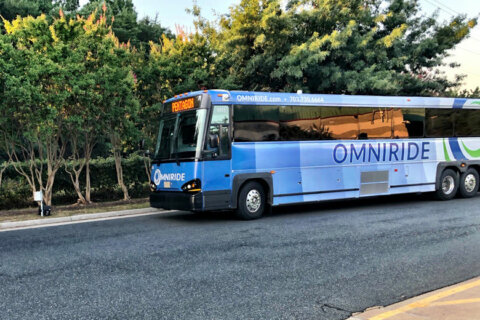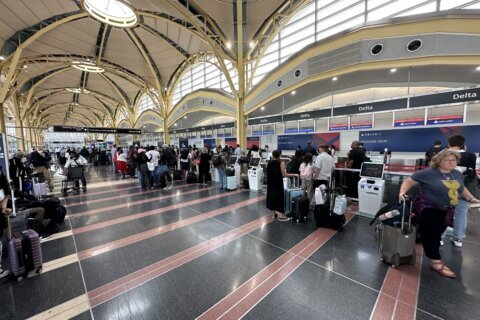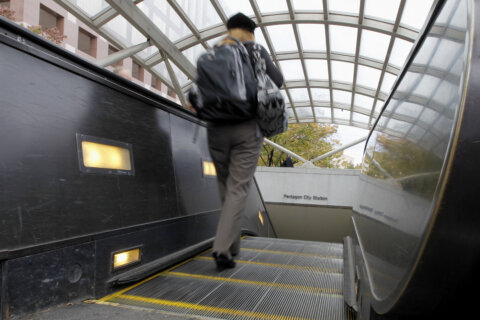With the number of COVID-19 cases falling, the volume of traffic around the D.C. region is rising heading into summer; and experts are wondering if an emerging traffic trend will stick around.
The Metropolitan Washington Council of Governments, or MWCOG, has been collecting traffic data since the start of the pandemic and detailing it in monthly reports.
In April 2020, as stay-at-home orders prompted by the virus took hold, traffic in the area plunged about 51% compared to the previous April.
The most recent data available show overall traffic in the region was down about 27% in February of this year, compared to the same month in 2019.
“I would expect in the coming months that we’ll start seeing some recovery in travel as employers and employees alike start considering going back to the office,” said MWCOG Planning Data and Research Program Director Tim Canan.
“What we don’t yet know is when we’re going to declare ourselves fully in the post-pandemic period, and what that post-pandemic period is going to look like,” Canan added.
WTOP traffic reporter Dave Dildine said weekday travel seems to be rebounding lately, but the timing has changed.
“The way traffic behaves these days is a lot like a warm, summer Saturday. So instead of two rush-hour peaks, it’s a gradual midday, early-afternoon buildup,” Dildine said. “Early mornings, late evenings, (traffic is) a little lighter. But middays and early afternoons tend to be a lot busier.”
Canan agrees, adding that it appears to be especially true in outer suburbs, such as Loudoun and Prince William counties in Virginia, and Charles and Frederick counties in Maryland.
“We see a lot more … midday travel trips that are being taken from people who aren’t at the office and have the ability to do that in the middle of the day,” he said.
Canan said summer traffic could be busy, but what happens after that could be particularly telling.
“What will that mean for September when the schools open back up and families have to be back home in order for their kids to go back to school, and offices may be expecting more of a presence of their workers in their facilities?” he said.
Dildine warns that although traffic volumes are not what they used to be, history tells us that when road capacity is available, it tends to be filled.
“It could be a few months or years off, (but) eventually in the year 2050, imagine a rush hour at midnight. It seems like a long shot, but it could happen. The way we live, the schedules we follow, traffic mirrors that. It’s a reflection of us — sometimes an ugly one,” Dildine said.
- Sign up for WTOP alerts
- Sign up for WTOP’s coronavirus email newsletter
- Latest coronavirus test results in DC, Maryland and Virginia
- Latest vaccination numbers in DC, Maryland and Virginia
- Md. stadium capacity limits are easing, but don’t expect big crowds right away
- ‘This has been traumatizing for people’: Montgomery Co. officials discuss mask guidance, evictions
- What experts are saying about masking, COVID-19 vaccine durability
Looking for more information? D.C., Maryland and Virginia are each releasing more data every day. Visit their official sites here: Virginia | Maryland | D.C.








